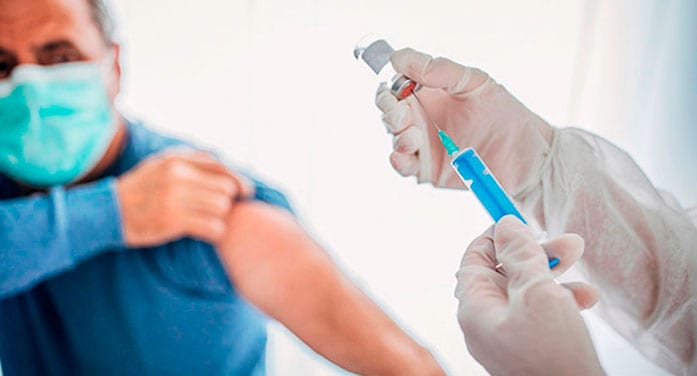 The Human Genome Project (HGP) stands as one of mankind’s most remarkable achievements. Its significance is easily equal to, or even eclipses, James Watson and Francis Crick’s discovery of DNA’s helical structure, or Neil Armstrong’s first steps on the moon.
The Human Genome Project (HGP) stands as one of mankind’s most remarkable achievements. Its significance is easily equal to, or even eclipses, James Watson and Francis Crick’s discovery of DNA’s helical structure, or Neil Armstrong’s first steps on the moon.
The goal was to determine the position and function of the more than 100,000 genes that comprise the 23 chromosomes of human DNA. It was a massive endeavour and the challenge was so overwhelming that it could only be accomplished by the global collaboration of scientists.
In 1990, a $5-billion publicly-funded plan was established under the auspices of national research councils in the United States and the United Kingdom. A 15-year timeline was set and the chromosome pairs were sectioned and sent to laboratories around the world.
The collaboration was a gamble that paid off in spades: the HGP was completed in 13 years (not 15) and at a cost of $3 billion (not $5 billion).
The group was led by Dr. Francis Collins, an American geneticist who is now head of the National Institutes of Health. Years ago, I heard him give a speech in which he jokingly (and probably quite rightly) referred to the HGP as the “only government project to ever be completed earlier than scheduled and under budget.”
The secrets to this multi-layered (financial, bureaucratic and scientific) success?
Collaboration. A plan. Guaranteed funding. Transparency.
So where are these proven determinants of scientific progress today?
We’re in a pandemic and, so far, there has been far more competition than collaboration in the race to create, manufacture and distribute enough vaccines to immunize all of humanity. As many as 23 vaccines have been approved by various countries and more than 60 others are in some stage of development or clinical trials.
A vaccine is, ultimately, the only solution to this pandemic. Former U.S. president Donald Trump may have eschewed masks, but his administration shifted $18 billion into a rapid vaccine development program called Operation Warp Speed. These funds have supported seven drug manufacturers, including $2.5 billion for Moderna Therapeutics and almost $2 billion for Pfizer. Perhaps that’s why these companies delivered some of the first, safest, most effective vaccines.
Instead of funding vaccine development, Canada’s leaders decided to pay “volunteers” by providing, without proper scrutiny, almost $1 billion to their ethically challenged friends at WE Charity and giving billions more to ensure the survival of almost every industry – except vaccine research and development.
This decision has not been without consequences.
Although Canada made agreements to obtain the most vaccine doses (more than four times our population) of any country, it has become abundantly clear that the big drug companies are in no hurry to deliver them, signed agreements or not.
In contrast, countries that pumped billions of dollars into research efforts (like the United States and the United Kingdom) began receiving their allotted doses long ago. While they’re quickly getting vaccines into arms, Canada is tumbling downward on lists that rank nations by the progress of their vaccine rollout.
To be fair, Canada did make an international contribution of $440 million to the World Health Organization’s vaccine partnership. Half of the money was to secure vaccines for us; the other half was to assist in creating a global vaccine cache for underdeveloped nations. But as our vaccine delivery schedules turned into a gong show, Prime Minister Justin Trudeau decided that Canada should dip into the global vaccine bank to withdraw vaccines that were set aside for the poor.
At home, attempts to fund the development of a Canadian-made vaccine were anemic and impractical, at best. Initially, just $23 million was provided for domestic vaccine research and payouts were capped at $5 million per group.
Later, $192 million was made available to vaccine manufacturers – but only as a reimbursement for expenses. That fund has only recently increased to $468 million. Such minuscule contributions, coupled with no money upfront, are not nearly enough to assist Canadian biotech companies in managing the financial risks of developing a vaccine.
Finally, most government decisions and contract negotiations have been conducted in secrecy. It was only recently that Canadians realized the federal government had, months ago, appointed a vaccine task force to advise on policy. Names were withheld from the public (until uncovered by the media), meetings take place in secrecy and details of contracts with private corporations are not released. Actions and decision-making on a national level have only been open and transparent if we pretend this is the Soviet Union, circa 1962.
Yet this is the group that apparently controls Canada’s pandemic destiny.
So much for collaboration. A plan. Funding. Transparency. Sadly, these proven characteristics of scientific progress are nowhere to be found in Canada.
Susan Martinuk is a research associate with the Frontier Centre for Public Policy and author of a soon-to-be-released book, Patients at Risk: Stories that Expose Canada’s Health-care Crisis.
Susan is one of our Thought Leaders. For interview requests, click here.
The views, opinions and positions expressed by columnists and contributors are the authors’ alone. They do not inherently or expressly reflect the views, opinions and/or positions of our publication.

